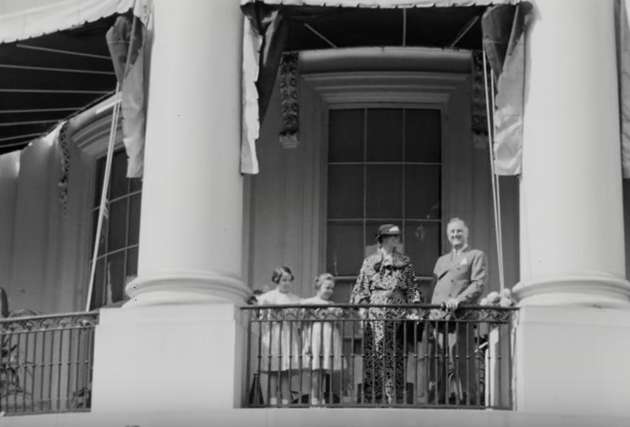1935 White House Easter Egg Roll
1935
Add to Favorites:
Add all page(s) of this document to activity:

This home movie shows the festivities at the 1935 White House Easter Egg Roll on the South Lawn of the White House. Nevada ranch owner Fred Hill captured the 16mm home movie (his grandson donated it to the Franklin D. Roosevelt Library). In the few minutes of silent footage taken with his personal camera, Hill caught views of families on White House grounds, close-up shots of Eleanor Roosevelt greeting guests, traffic on nearby Washington, DC, streets, and a two-second glimpse of a large Zeppelin airship floating directly over the White House.
Notably, the film includes footage of President Roosevelt walking to the South Portico to address the crowd. FDR lost the use of his legs after contracting polio in 1921 at the age of 39. Footage of him walking is uncommon. Filming or photographing his disability was highly restricted by the White House, and camera operators and news photographers complied with those restrictions. Unbeknownst to most Americans at the time, Roosevelt primarily used a small wheelchair to move from location to location within the White House and at home, using his adaptive walk only for short distances at public appearances.
The film is also believed to be the earliest existing motion picture footage of an Easter Egg Roll hosted by the Roosevelts.
Notably, the film includes footage of President Roosevelt walking to the South Portico to address the crowd. FDR lost the use of his legs after contracting polio in 1921 at the age of 39. Footage of him walking is uncommon. Filming or photographing his disability was highly restricted by the White House, and camera operators and news photographers complied with those restrictions. Unbeknownst to most Americans at the time, Roosevelt primarily used a small wheelchair to move from location to location within the White House and at home, using his adaptive walk only for short distances at public appearances.
The film is also believed to be the earliest existing motion picture footage of an Easter Egg Roll hosted by the Roosevelts.
This primary source comes from the Collection FDR-MotionPictures: Motion Pictures Collection.
Full Citation: Motion Picture MP18-05; 1935 White House Easter Egg Roll; 1935; Collection FDR-MotionPictures: Motion Pictures Collection; Franklin D. Roosevelt Library, Hyde Park, NY. [Online Version, https://www.docsteach.org/documents/document/1935-white-house-easter-egg-roll, April 25, 2024]Rights: Copyright Not Evaluated Learn more on our privacy and legal page.



